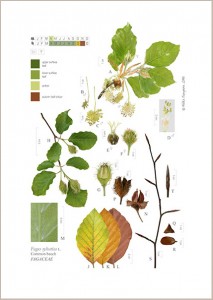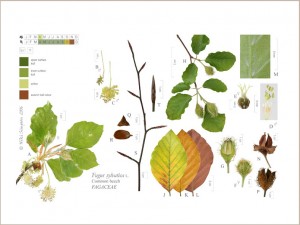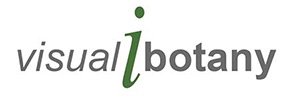5. Freedom of movement – flexibility in digital botanical illustration
From talking to others it seems that my images are often thought to be collages, but that is not how I see them, or indeed work with them. And since this relates to my previous post about overlap, it seems a good time to clarify this misunderstanding.
I want to emphasize that my images are not collages, at least not in the traditional sense of being irretrievably pasted down to form a fixed final image. These images are free, only becoming permanently fixed at the point of printing on to a medium such as paper or board. Onscreen, the elements need not be fixed to any background, nor to each other. All the component parts within a composite arrangement exist and function as separate ‘floating’ entities which are independently moveable, sizeable and interchangeable. The parts may be fixed into a position for a particular purpose, but not irretrievably, and there is the option for many different final images. This distinction is important as it has so many implications, only one of which is the advantage of being able to bring partly obscured parts forward to make them visible. Most importantly it means that while the images may be created for one purpose, that they can be readily altered and used again and again for a wide variety of different purposes. Numerous benefits other than the ability to reverse any overlap, notably include the flexibility of composition and the potential for interactivity.

Primary image

Secondary image
To give you just one example of what flexibility of composition allows, a vertical composition can be very easily and quickly modified to suit a horizontal format. For example, here is my illustration of the common beech, Fagus sylvatica. Above is my standard layout or portrait version, while below the same image has been re-composed to one of many possible secondary arrangements, in this case a landscape format. To achieve the new (well hardly new; it was created for inclusion in my Digital Diversity brochure in 2007; see pp.6-7 if you have a copy) horizontal composition, all the ready-scaled parts have simply been re-arranged. I consider the portrait versions to be my primary or core images.
And why you may ask, might it be an advantage to have an image that can be orientated either way? Well, by having the potential for both options (and indeed others), anyone commissioning an illustration gets the option to speedily get a secondary arrangement at a later date, since all that is needed is to re-arrange the same ready-scaled parts. There may be all sorts of reasons for differing formats, but notably, a horizontal composition has relevance for display on computer monitors, while the potential to be adjusted for whatever aspect ratio format is required, has relevance for the evolving dimensions of mobile phone and tablet screens.
So these illustrations, have an inbuilt resilience to changing requirements through their flexibility and adaptability. Whether digital photography or digital drawing, the freedom the digital medium allows is breathtaking – the images created really are re-layerable, re-arrangeable, re-composable, re-sizable, re-scalable, re-orientatable, correctable, updatable, etc., meaning that the images should be seen as truly flexible multi-purpose images, and ones with a future that we probably cannot fully comprehend at the present.
